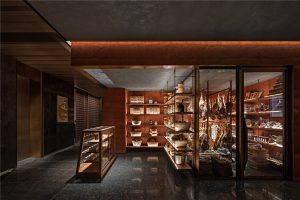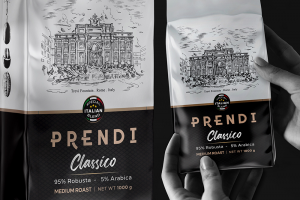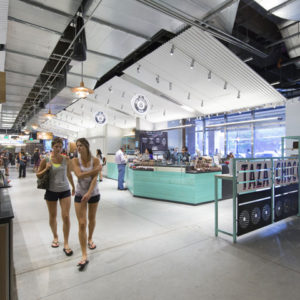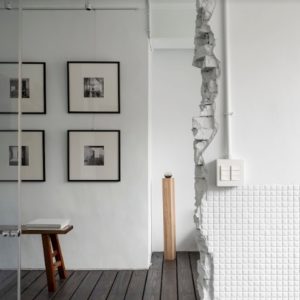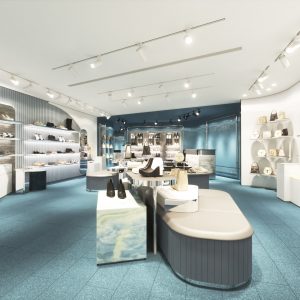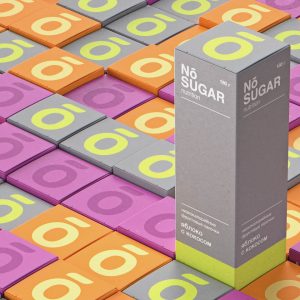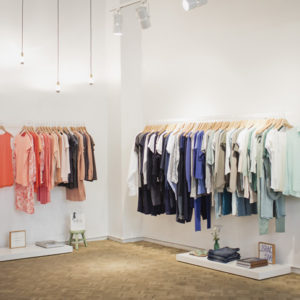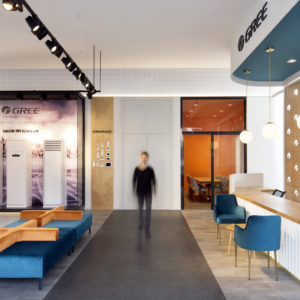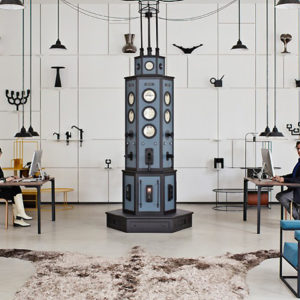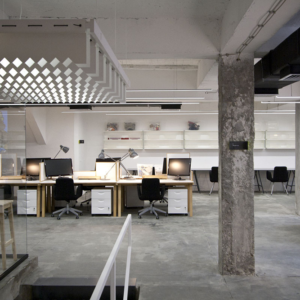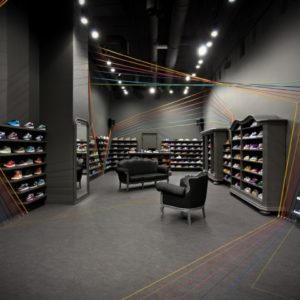
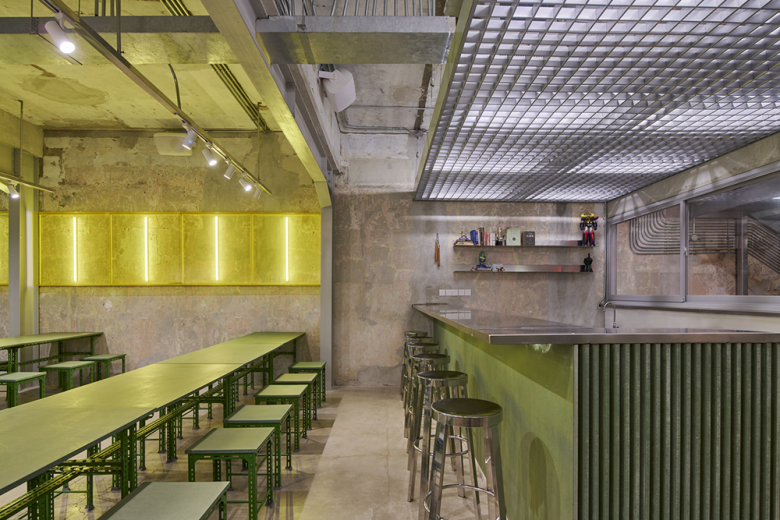
Iron Fist is a two-story Chinese fusion restaurant and bar located in Blok M, South Jakarta. Situated in the historical neighborhood of Blok M this restaurant is trying to embed itself in the hustling-bustling context. Blok M area, known as Little Tokyo because of the strong presence of Japanese-owned businesses in the vicinity, is going through a rapid revitalization to bring back its past time glory as a popular destination for young people and tourists in the 80’s. The face of the Blok M area was dominated by modernist buildings from the ’60s and ’70s. The modernization of Blok M in recent years but the original face of this area behind pastiche design represented with glass curtain walls and colorful aluminum panels.
There is a momentum shift when people become more attracted to alternative outdoor hangout places outside big-box shopping malls. During post covid era people prefers more open-air hangout places thus hole-in-the-wall restaurants with outdoor space around the Blok M area become a hit. This is a great opportunity for Iron Fist to be a part of the Blok M revitalization movement to regain this area’s popularity.
The design intent for the exterior is to focus on returning the building facade to its original state. This means liberating the frontage from the aluminum curtain wall installed by the previous tenant so that the beauty of the existing modernist facade can be exposed. A similar strategy for the interior, the existing wall, and ceiling are to be revealed and become the highlight of the project. The relatively new paint is scrapped to show layers of old paints that were applied multiple times from different tenants. This exercise is part of the exploration to find aesthetic specific to the context.
While the beauty of the existing becomes the main show of this project the supporting acts come from the steel elements. Not only for aesthetic purposes but the presence of steel here is also used for structural reinforcement of the old concrete structure. Off the shelf steel elements such as cable tray and slotted angle are used widely in this project along with other materials with the minimum finish. The idea is to introduce simple and non-pretentious materials in the existing space; beauty is sought from the coexistence between the old and the new elements.
Glass facades on both levels are positioned setting back from the original facade to create a larger semi-outdoor space for customers. On the ground level, the setback opens up a transitional space that acts as a seating area and takeout counter. A deeper setback on the upper level is intended to allow more spacious semi-outdoor space for bar and group seating. Indoor seating and convertible private rooms are accommodated in the indoor part on the upper floor. Rolling doors and yellow vinyl stripes are used as flexible partitions to adapt to different private room settings. The renovation also includes the improvement of the existing mechanical and plumbing system and also replacement of the old stair with the new steel staircase.
Open and airy bar space on the upper level is supplemented with a tropical infusion from the long linear planter. The gravel flooring is presented to give an extra outdoor feel for the semi-outdoor seating area. Colorful neon boxes are introduced on every level of the restaurant to resemble old Hong Kong neon signs; this element becomes the datum of the design. Color selection is based on the graphic identity of the Iron Fist restaurant.
Architects: Studio Kota
Lead Architect: Erick Kristanto
Design Team: Nicole Fernanda, Raushan Fikri
Photographs: William Sutanto

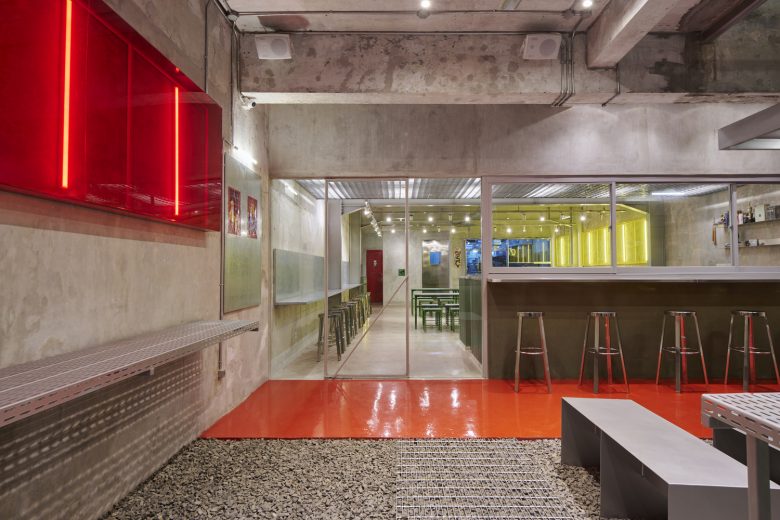
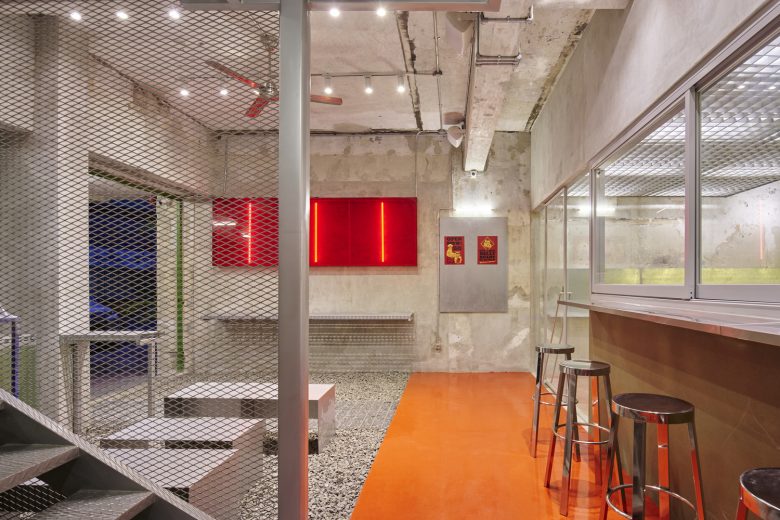
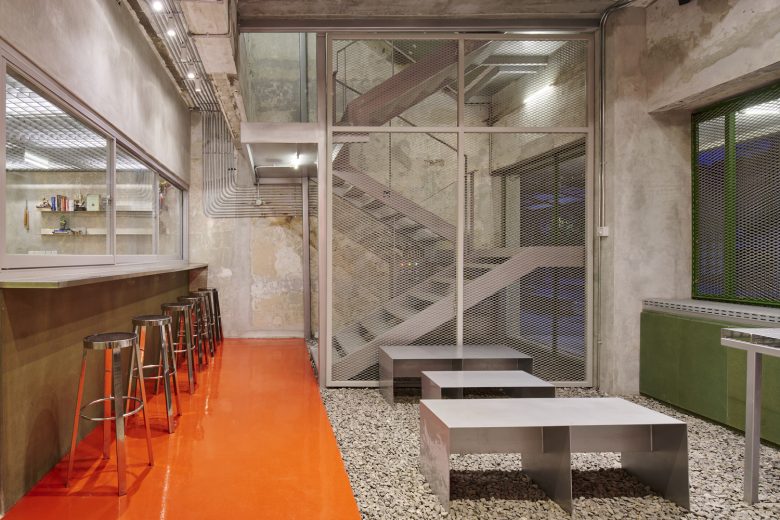
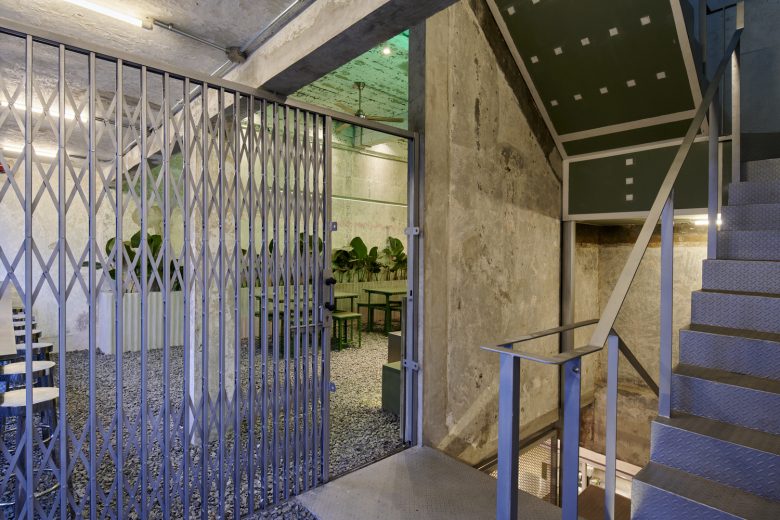
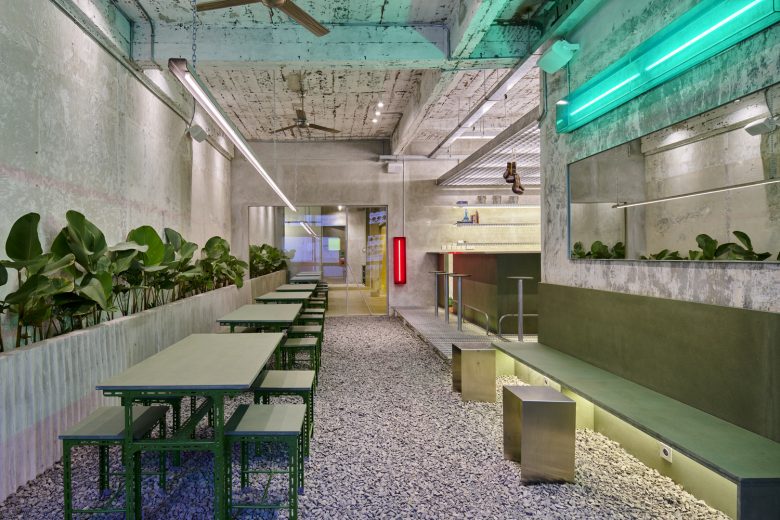
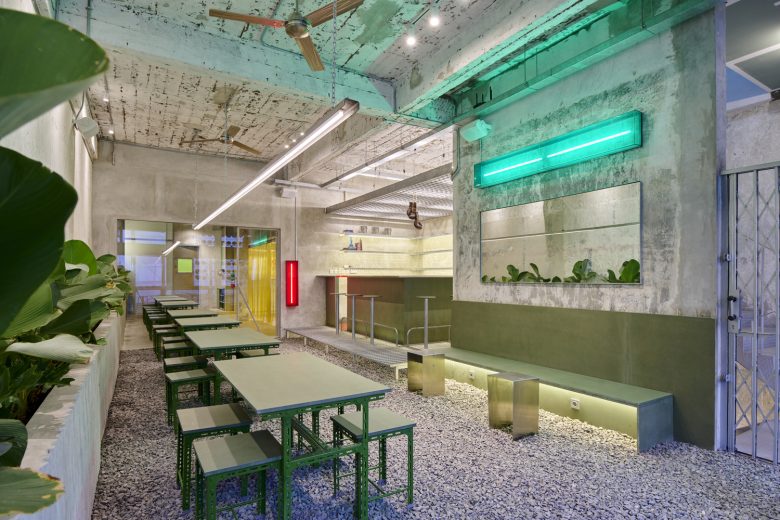
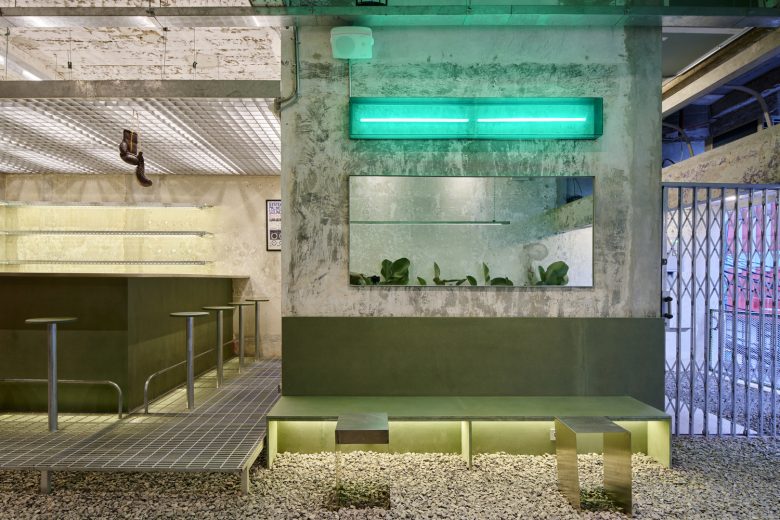
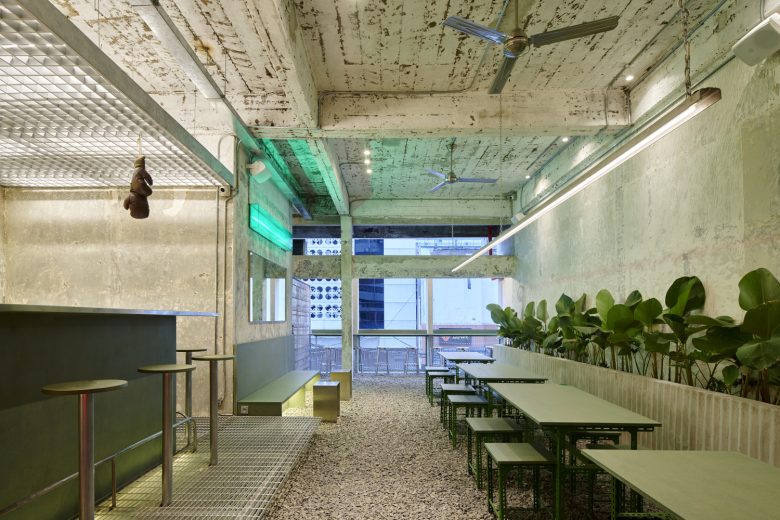
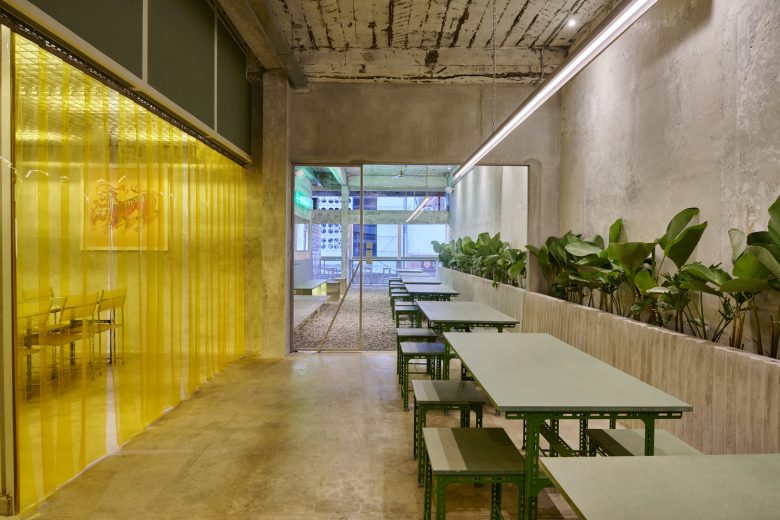
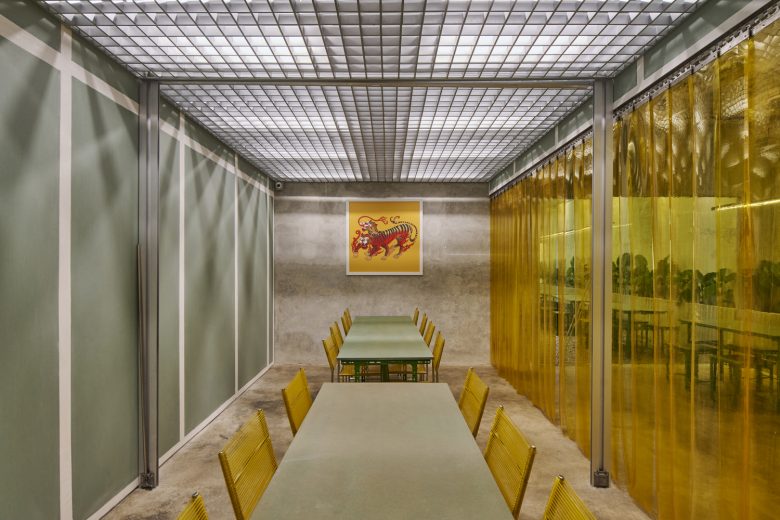

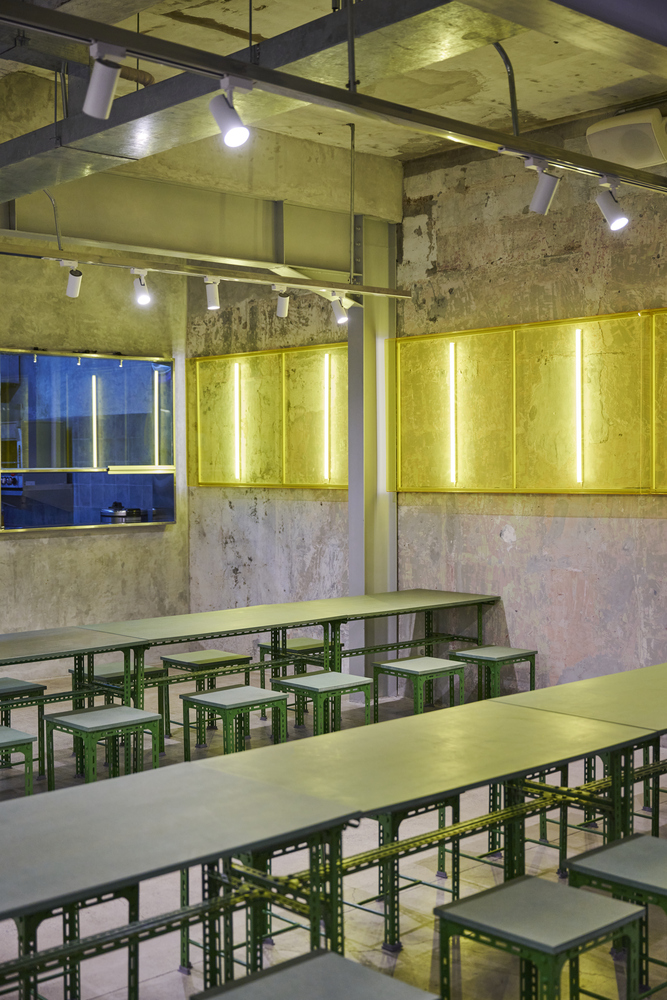

Add to collection
